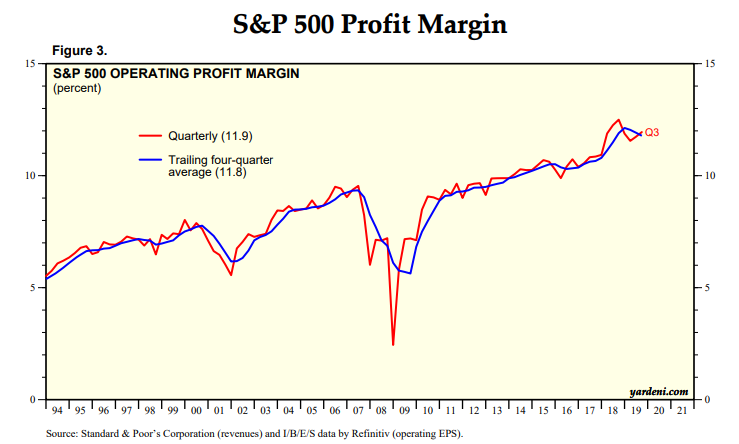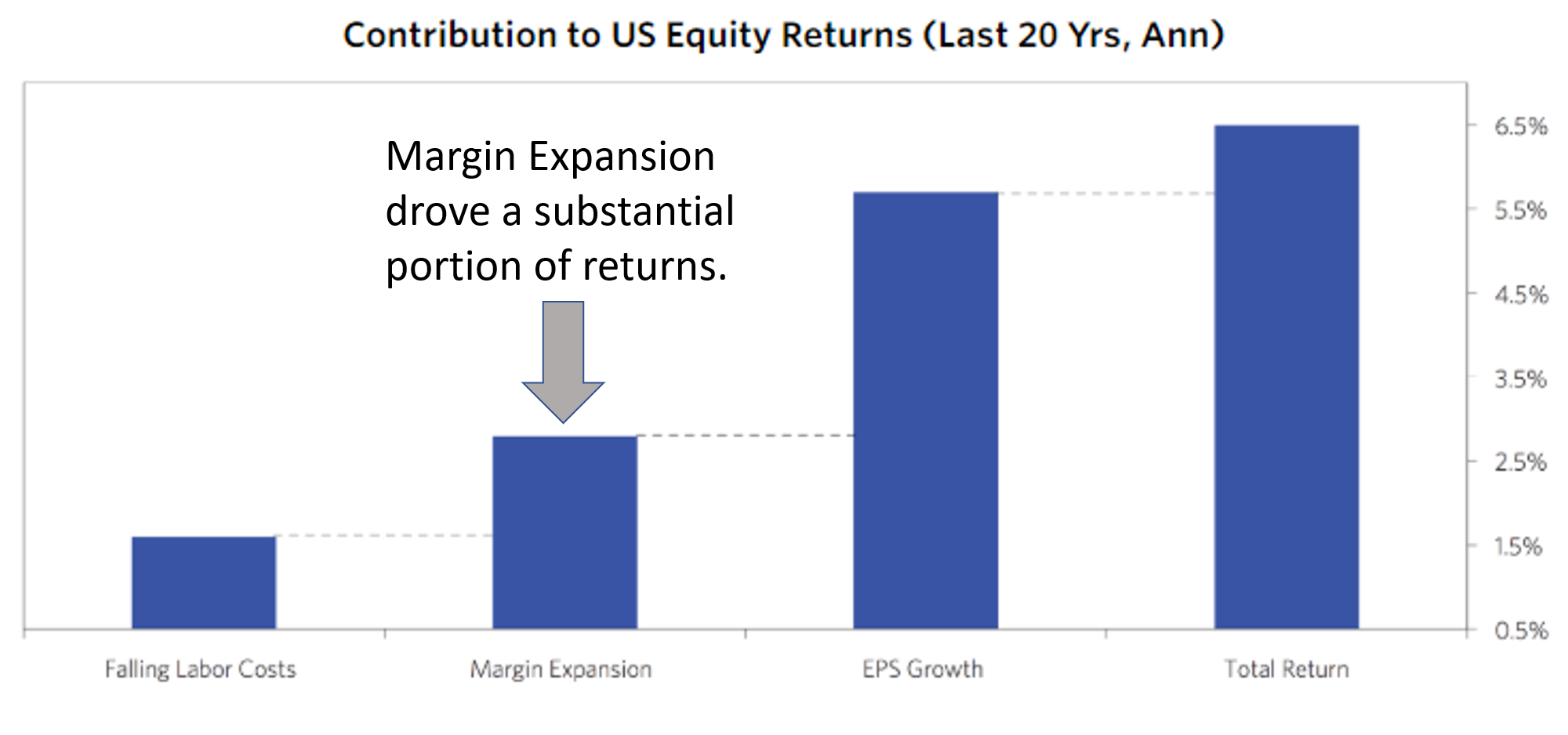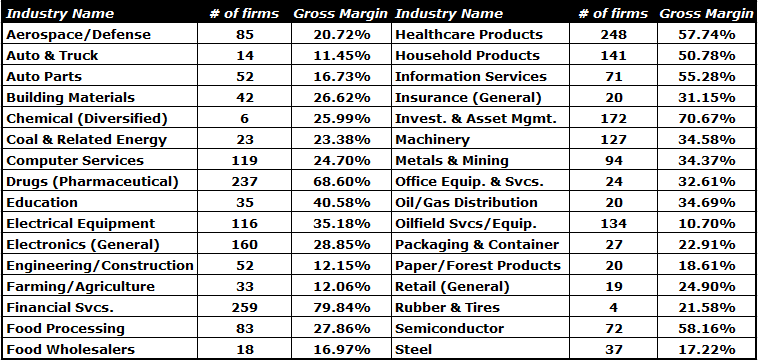To Improve the Bottom Line, Start at the Top
Gross margins are important to executives in all business cycles. The pressure never seems to be turned off, in good times or not so good.
In times of economic expansion, as we have seen for most of the last decade, margin pressure has continued to increase due to rising raw materials costs. We've seen hyper-efficient scale competitors with low operating expenses gain pricing leverage (think Amazon). Small competitors and new entrants also buy market share with deep discounts that put pressure on margins.
In times like these, cost-cutting typically takes a back seat to investing in growth. However, in anticipation of leaner times, most executives will instinctively look to cost-cutting as a priority measure. It’s often the very first action they consider when sales stay flat or begin declining.
Why? Because it’s the action they’ve been taught is the most immediate and direct in preserving or expanding the bottom line, painful as it may be - especially when it involves staff reductions or line-item expenses which the business relies upon. Cuts can impact raises, bonuses or other employee incentives which can be quite unpopular.
But in an economic slowdown, which many are forecasting over the next 24 months, the ideal path to expanding margins is not always in these familiar categories and actions.
It’s imperative to first understand how the prices you establish for selling goods and services to each and every segment and customer ties directly to revenue; how strategic pricing can have a dramatic effect on gross margin; and, how changes in operating expenses (which can also be impacted by pricing efficiencies) can fall directly to the bottom line.
A Bit of History
With only a few aberrations along the way, since the early ’90s, profit margins have steadily increased - in fact, they’ve nearly doubled in some cases. A strong dollar and US economy, favorable monetary and fiscal policies, and advancements in technology have all contributed to this upward momentum.

Businesses have learned to sell their products with lower direct costs including manufacturing and labor - while operating expenses have also benefited from consolidation, greater efficiencies, technology advances, and improved business processes. Margin expansion has directly contributed to record growth in equities as the stock market has continued to break new records.

Gross Margins Tell a Story
Gross margins tell a story for businesses. They measure how well a business is using its resources to produce a product or service and helps a company gauge how it is performing relative to competitors. Typically, the higher the gross margin percentage, the healthier the business.
However, a company’s industry and its product also factor into gross margin percentages. For example, a service business, where employees’ time is the product would have a higher gross margin on average than other industries. This is because it doesn’t have direct material costs that must be deducted from sales.
When evaluating gross margin, businesses should closely compare their metrics with the industry average and with key competitors to determine how the company is performing. A January 2020 study from NYU’s Stern School shows the broad range of gross margins by type of business.

Gross margin often provides insight into cost overruns and inflating raw material costs. If gross margin is not on par with industry standards and direct competitors, the business may look to reduce its cost of goods sold, raise prices selectively, or both. Even one additional percentage point in either direction can have a significant impact on gross profits. And as it turns out, underperformance can frequently point to poor segmentation and pricing decisions that have occurred before costs are even applied.
The targeted gross profit margin must be set at a ratio that allows for an adequate amount of revenue to filter down to operating profit, and ultimately net income. Without the ability to make good pricing decisions on each and every sale, the downward flow of resources is less predictable and could result in an inadequate return to shareholders.
Take Pricing Actions To Expand Margins
Improving results on the bottom line often starts at the very top - with pricing decisions at the customer and product level that allow the company to make enough money to cover not only the cost of goods sold but also the company’s fixed overhead costs and variable operating expenses.
With a more strategic and dynamic approach to pricing, executives may also find that lowering gross margin on certain products might drive significantly more unit sales, thus increasing revenue and overall gross profits for that category. And raising prices selectively on certain products or services for specific customers where you have more flexibility and less price sensitivity can offset price reductions in other categories and segments.
By monitoring and ensuring products are priced appropriately, and implementing dynamic pricing to predict better sales outcomes, executives have more flexibility and predictability in establishing and executing their business strategy. And with the ability to make better and more proactive decisions, they can then look toward additional ways to grow revenues and profits...such as developing new products, entering new markets and expanding business operations.
Case Study - Price Sensitivity
The process of adapting prices to achieve margin improvement should be closely guided by price sensitivity. Price sensitivity that is generated by Artificial Intelligence is how one building products manufacturer, using Zilliant Price IQ™, achieved a substantial margin improvement by delivering segment-specific pricing guidance to sales representatives. Price IQ uses real transaction data to derive optimized prices that incorporate customer price sensitivity and market prices.
Before publishing new prices, the company adjusted individual product line pricing using the Zilliant Strategy Interface to reflect specific business goals and ensure market consistency.
This manufacturer made it a priority to finalize new pricing on time for its next pricing catalog update, leaving three months to set up the pricing model and incorporate the data. The goal was to set margins at market-based levels acceptable to customers and aligned with the company strategy. Executive vision and accountability gave the sales team confidence to stick to the new data science-driven prices.
The Zilliant difference was a 130 basis point margin improvement — $3.4 million annually within the brand while keeping revenues whole. The manufacturer understood that realizing margin improvement could start right at the top, and rather than jumping to the conclusion it must cut costs, they leveraged the power of technology to achieve margin improvement with a substantial ROI in the process.
If you want to learn more about how ZIlliant is helping businesses expand margins from the top, connect with me on LinkedIn, send me an email or contact our team here.
About the Author
Kyle Nations is Sales Director at Zilliant helping global B2B companies realize improved financial performance using advanced technology for optimal pricing & sales effectiveness.
